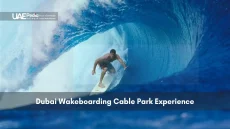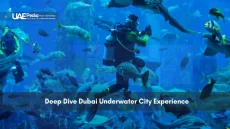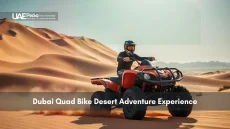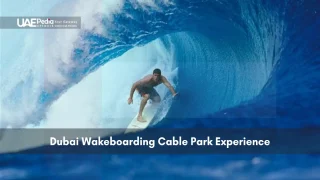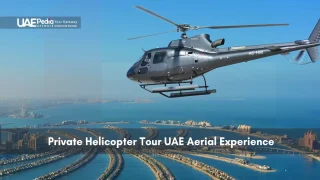Did you know the world’s fastest powerboats slice through water at speeds rivaling Formula 1 cars? This high-octane spectacle isn’t just about raw velocity—it’s where cutting-edge engineering meets the glittering skyline of the Emirates.
Picture sleek machines skimming turquoise waves, their hulls defying physics while the Burj Al Arab glints in the distance. Each race blends adrenaline with cultural storytelling, offering front-row seats to a sport where tradition and innovation collide.
The F1H2O World Championship—hosted here annually—draws elite pilots and global fans. Recent press updates hint at tighter turns and record-breaking weight reductions in next-gen boats. Safety advancements now let drivers push limits while spectators soak in waterfront views from prime date-specific vantage points.
But this event isn’t just for speed junkies. Between heats, explore how Emirati maritime heritage shapes modern competitions. We’ll unpack everything from race days logistics to the science behind hydrodynamics—all served with Arabian Gulf breezes.
- Discover how desert modernity fuels aquatic innovation
- Learn why specific dates offer unmatched access to teams and tech
Exploring the Thrill: The World of Power Boat Racing
Imagine a time when motorized vessels were novelty acts at coastal festivals. That’s where our story begins—in 1904 Nice, France, where gasoline engines first roared across Mediterranean waves. What started as a curiosity soon became a sport, with daredevils pushing wooden hulls beyond 30 mph. “Racing isn’t just speed,” one early pilot noted. “It’s man versus water—and sometimes gravity.”
When Pioneers Redefined Speed
The real game-changer came in 1956 with the Miami-Nassau race. This 184-mile dash through shark-infested waters became the ultimate test of endurance. Teams navigated open seas without GPS, relying on compasses and sheer nerve. This event birthed modern offshore competitions, inspiring the Class 1 series we know today.
Engineering Breakthroughs That Changed the Game
Early boats weighed over 5,000 pounds—today’s carbon-fiber designs slash that weight by half. Lighter hulls allowed tighter turns and higher speeds, transforming racing conditions. By the 1980s, nations like Italy and Norway dominated championships, their engineers swapping stories across countries.
Key dates tell the tale: the 1972 Union Internationale Motonautique world cup, the 1990s catamaran revolution. Each milestone proves how this sport blends tradition with jet-age innovation. Next time you watch a race, remember—those sleek machines carry over a century of saltwater legacy in their wake.
An Insider’s Guide to the dubai power boat racing experience
There’s a moment when the Gulf’s breeze carries the roar of engines before you see the action—a sensory preview of what’s coming. At the Dubai International Marine Club, this anticipation crackles through the crowd like static before a storm.
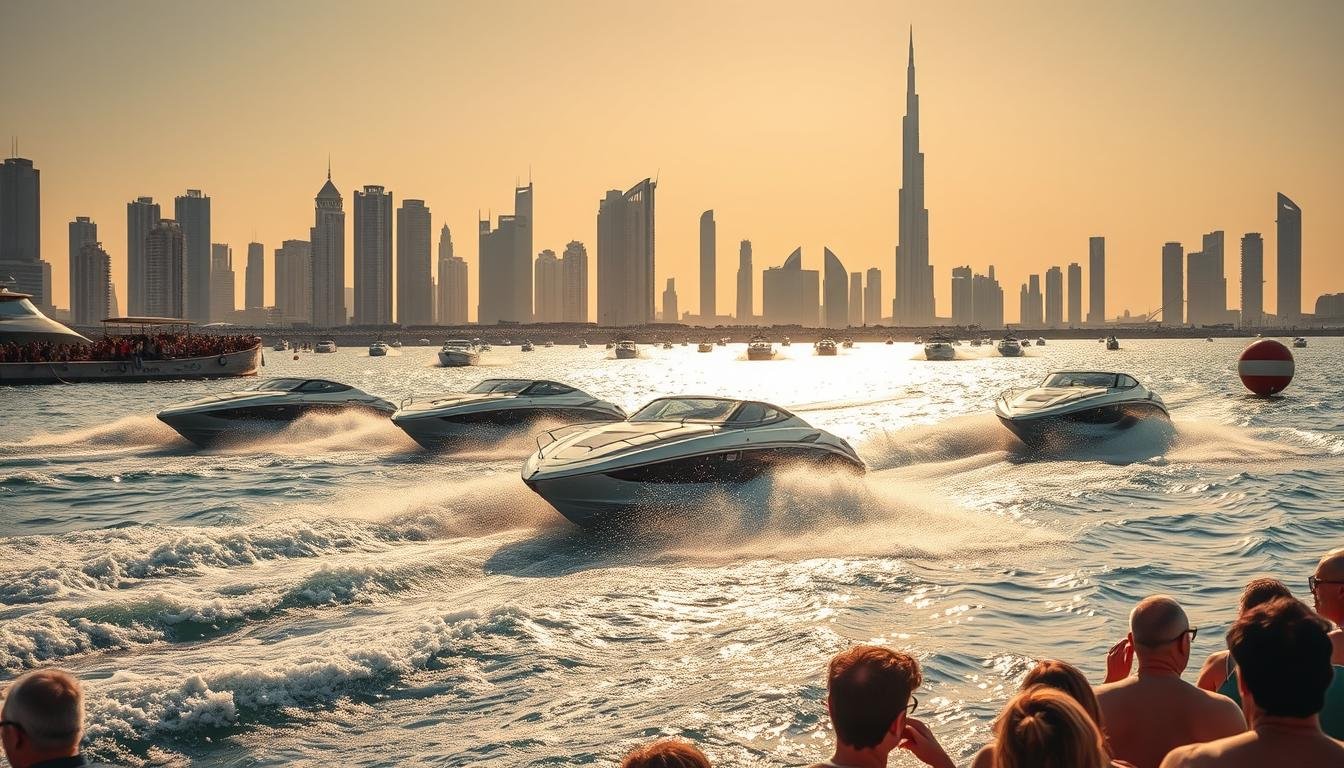
Where Saltwater Meets Showmanship
Grandstands hum with chatter in six languages as crews fine-tune engines nearby. We’ve watched seasoned fans stake out front-row spots by 8 AM—their secret? Check the date listings: November through March races pair cooler temps with glassy waters ideal for record attempts.
Your Front-Row Playbook
Morning heats showcase technical precision, while afternoon sprints deliver heart-in-throat moments. “It’s not just speed,” a crew chief told us last season. “It’s how these machines dance with waves.” Pack binoculars—you’ll want to catch pilots’ laser focus as they carve turns at 140+ mph.
| Best Viewing Dates | Water Conditions | Pro Tip |
|---|---|---|
| Mid-November | Calm, minimal chop | Arrive pre-dawn for pit walk access |
| February Finals | Moderate swells | Sunset races = golden hour photos |
| March Championships | Variable winds | Check live radar apps for updates |
Local weather shifts fast—light layers beat bulky jackets. Post-race, follow the scent of cardamom coffee to food trucks dishing luqaimat (sweet dumplings) while analyzing replays with new friends. This is where sport becomes spectacle, tradition meets tomorrow, and every visitor becomes part of the story.
Technical Mastery and Strategy on the Water
What do jet engines and championship vessels have in common? Today’s elite machines balance raw force with featherlight precision—think 1,500-horsepower engines paired with carbon-fiber hulls weighing under 2,500 pounds. Teams worldwide now chase fractions of a second through smarter engineering and seamless teamwork.
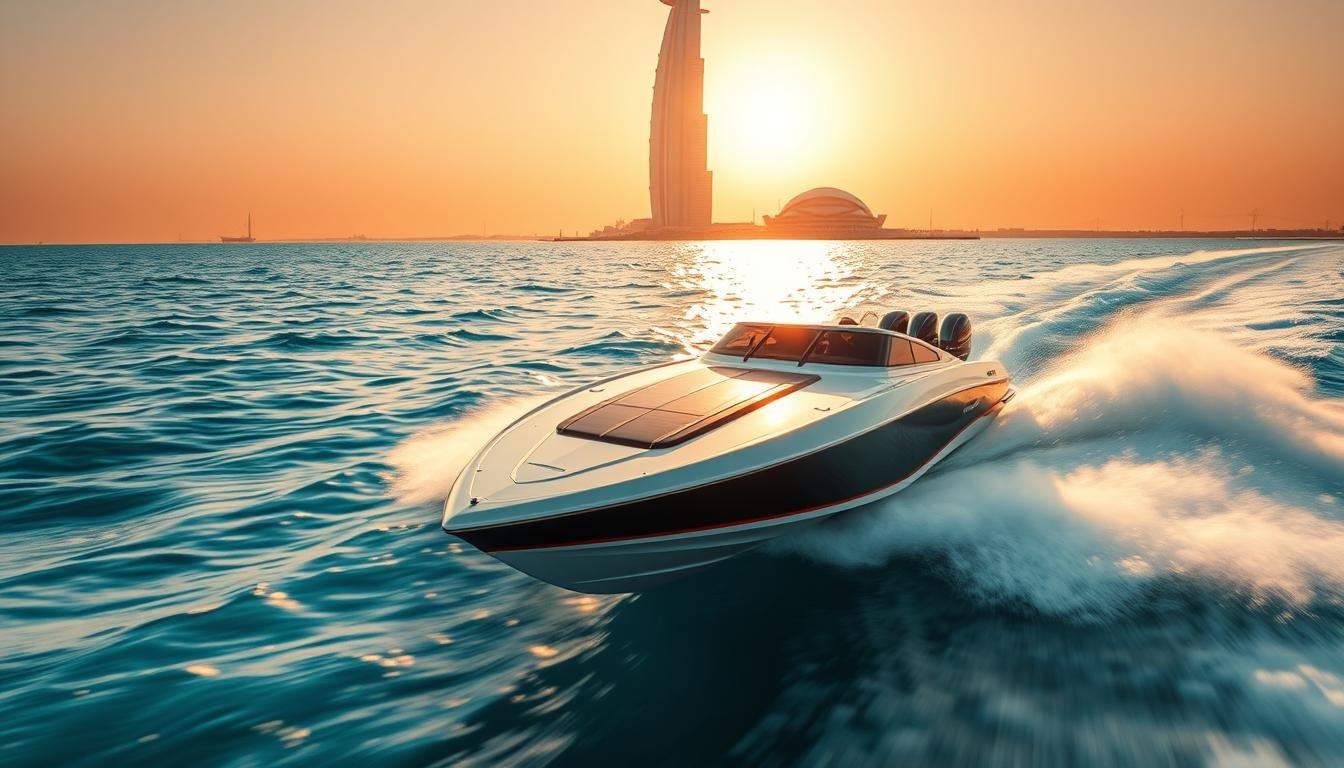
Modern Specifications and Safety Innovations
Underneath those sleek exteriors lie aerospace-grade materials and safety systems rivaling race cars. Impact-resistant seats anchor drivers during 5G turns, while emergency oxygen kits activate automatically if capsized. “We’re not just building speed,” notes an Italian engineer. “We’re crafting survivable speed.”
Minimum weight rules ensure fair competition, but teams optimize balance through fuel placement and sensor-guided trim tabs. Advanced telemetry streams real-time data to shore crews—a far cry from compass navigation days.
Crew Dynamics and Race Tactics
Victory hinges on two roles: the driver reading water conditions like a poet, and the throttleman adjusting thrust mid-turn. Their split-second communication determines whether a hull slices or skids. Propeller choices shift hourly—broad blades for choppy seas, slim designs for calm mornings.
Key dates in a race weekend matter most during Friday tech inspections and Saturday warm-ups. Teams from 12 countries often swap setup secrets, creating a global knowledge pool. Norwegian crews favor reinforced rudders for northern swells, while Australian engineers pioneer self-cooling gearboxes.
| Country | Tech Contribution | Race Impact |
|---|---|---|
| Italy | Lightweight hull alloys | +3% cornering speed |
| USA | AI weather prediction | Fewer course surprises |
| Japan | Hydrodynamic coatings | Reduced drag |
Reflections on the Adventure: Final Thoughts on Dubai’s Racing Culture
A faded 1993 Gulf News clipping tells of fishermen cheering wooden dhows-turned-racers – a far cry from today’s carbon-fiber marvels. We’ve sailed through decades where key dates transformed spluttering engines into symphony orchestras of hydrodynamics.
Remember those mid-November mornings when crews still tightened bolts by hand? Modern teams now analyze wave patterns via satellite, yet the crowd’s gasp at a perfect turn remains unchanged. This sport thrives where tradition fuels innovation – where every hull redesign honors Emirati seafaring roots.
February’s championship dates now draw engineers from Milan to Osaka, yet local crews still share ghawa coffee with visitors. That’s the magic: a 140mph powerboat race feels both cutting-edge and comfortingly familiar, like reuniting with an old friend who’s learned parkour.
So next time you watch a boat slice through Gulf waters, see beyond the spray. Spot the grandfather pointing out his favorite pilot, the teen filming for TikTok, the engineer scribbling notes. Here, every roar of engines writes a new chapter in a story that began with sails. Ready to add your verse?
The prime season runs from November to March, when temperatures hover around 75°F (24°C) and Gulf waters stay calm. Major events like the UIM F1H2O World Championship often anchor their Middle Eastern legs here during these months.
A> General admission areas along Mina Seyahi Beach are free, but premium grandstand seats or VIP packages with shaded seating and catering can be booked online. Early arrival secures prime shoreline spots!
A> Organizers prioritize safety – races may delay or adjust courses if winds exceed 20 knots or water visibility drops. Follow the Dubai International Marine Club’s social updates for real-time changes during event days.
A> Boats adhere to UIM standards with roll cages, fire suppression systems, and GPS tracking. Spectator zones use floating barriers, while patrol boats and drones monitor the course. Helmets and life vests are mandatory for crews.
A> Yes! Pit areas often open pre-race for meet-and-greets. Check the event schedule for “Fan Zones” – teams like Victory and CTIC sometimes offer guided walks of their 50-foot catamarans prepped with 1,000+ horsepower engines.
A> Its strategic position between European and Asian circuits, state-of-the-art marine facilities, and year-round sunshine make it ideal. Plus, the city’s passion for blending adrenaline sports with luxury hospitality draws global teams and sponsors.




